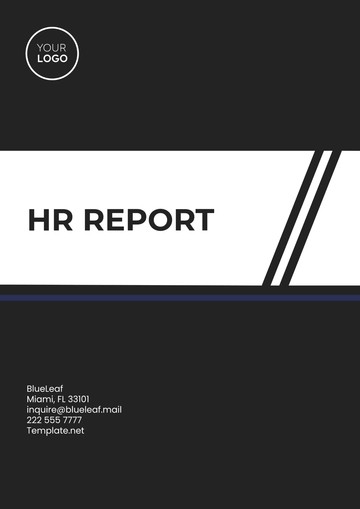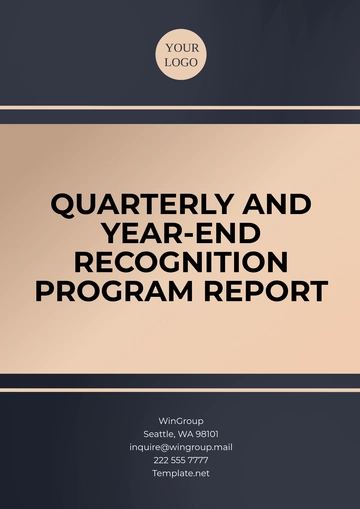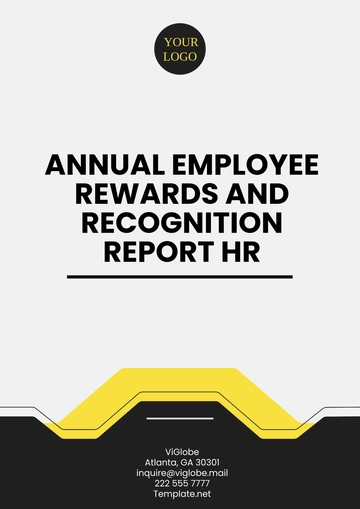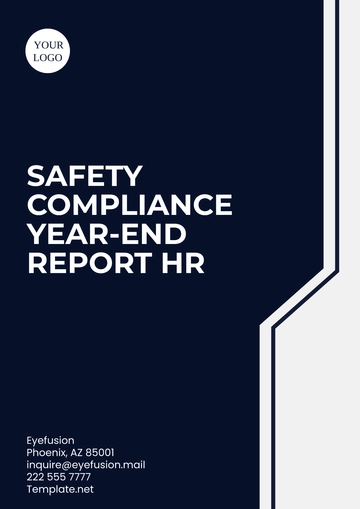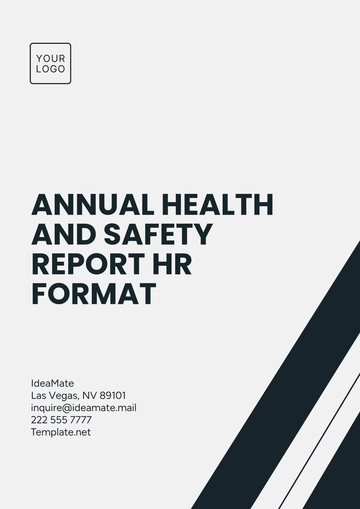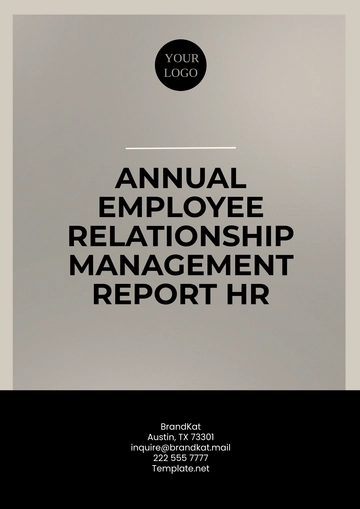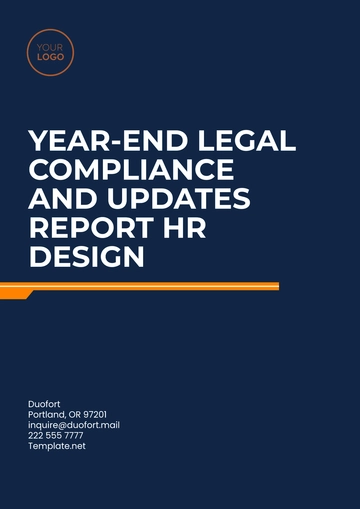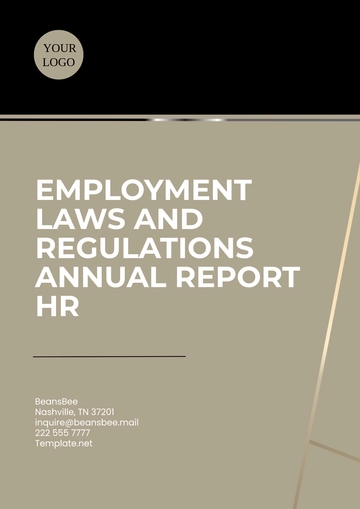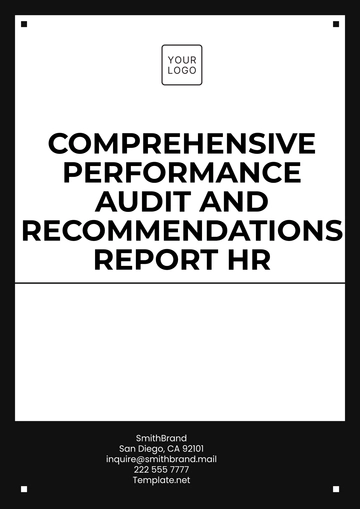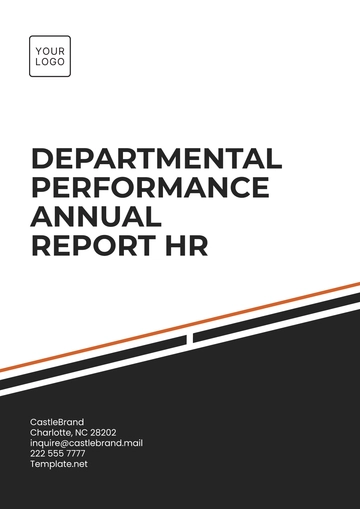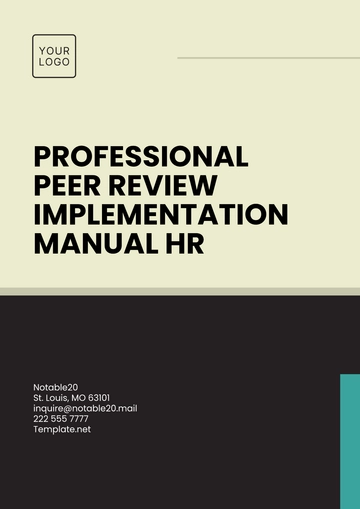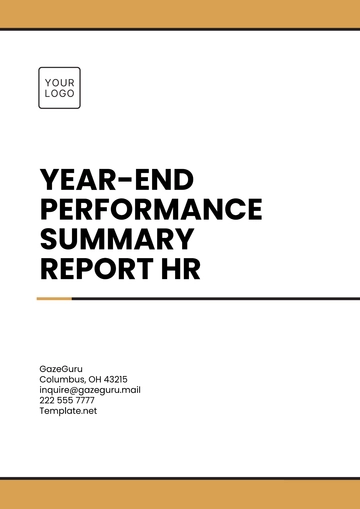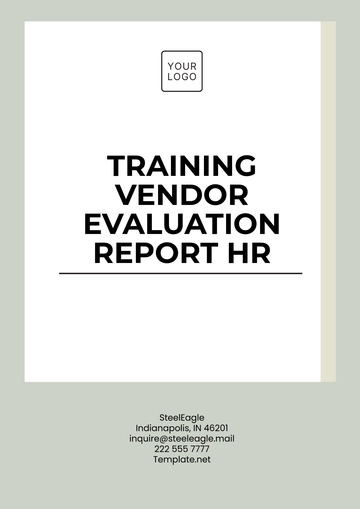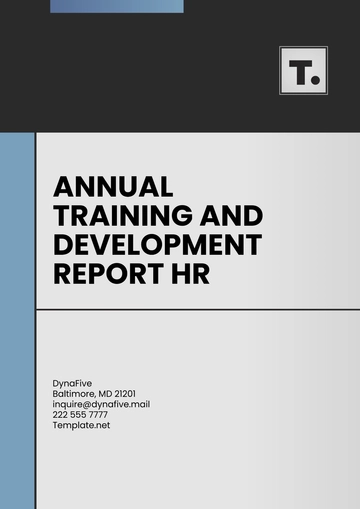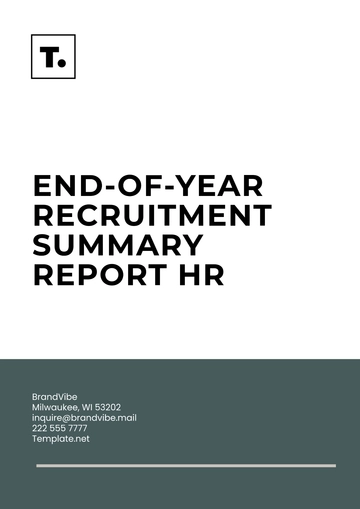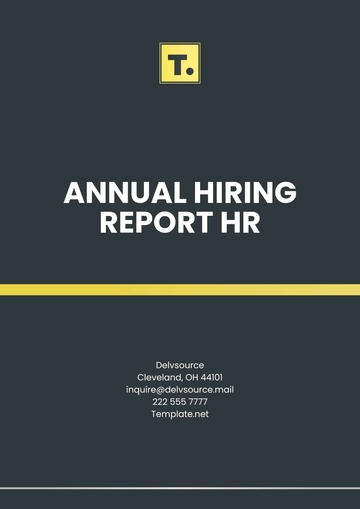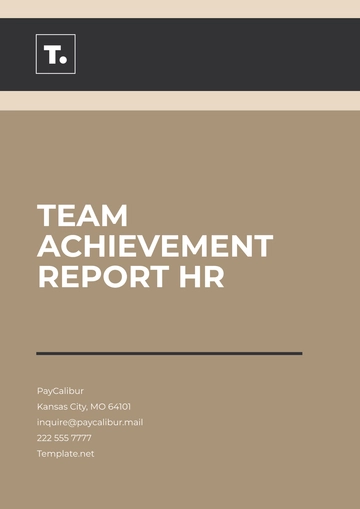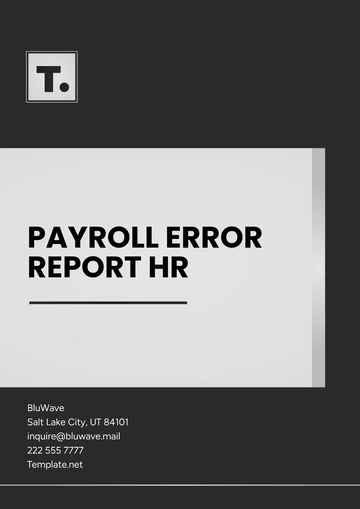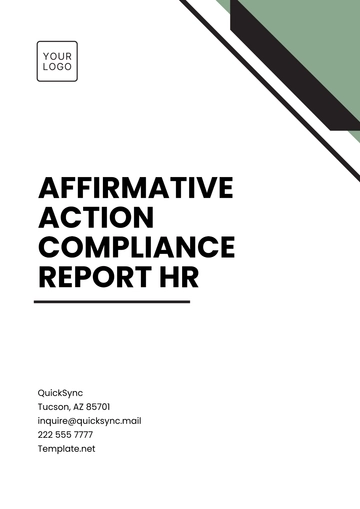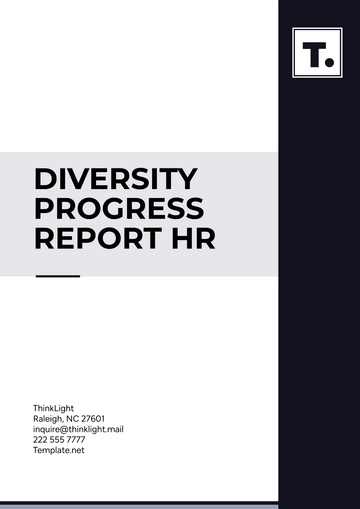Free HR Monthly Report
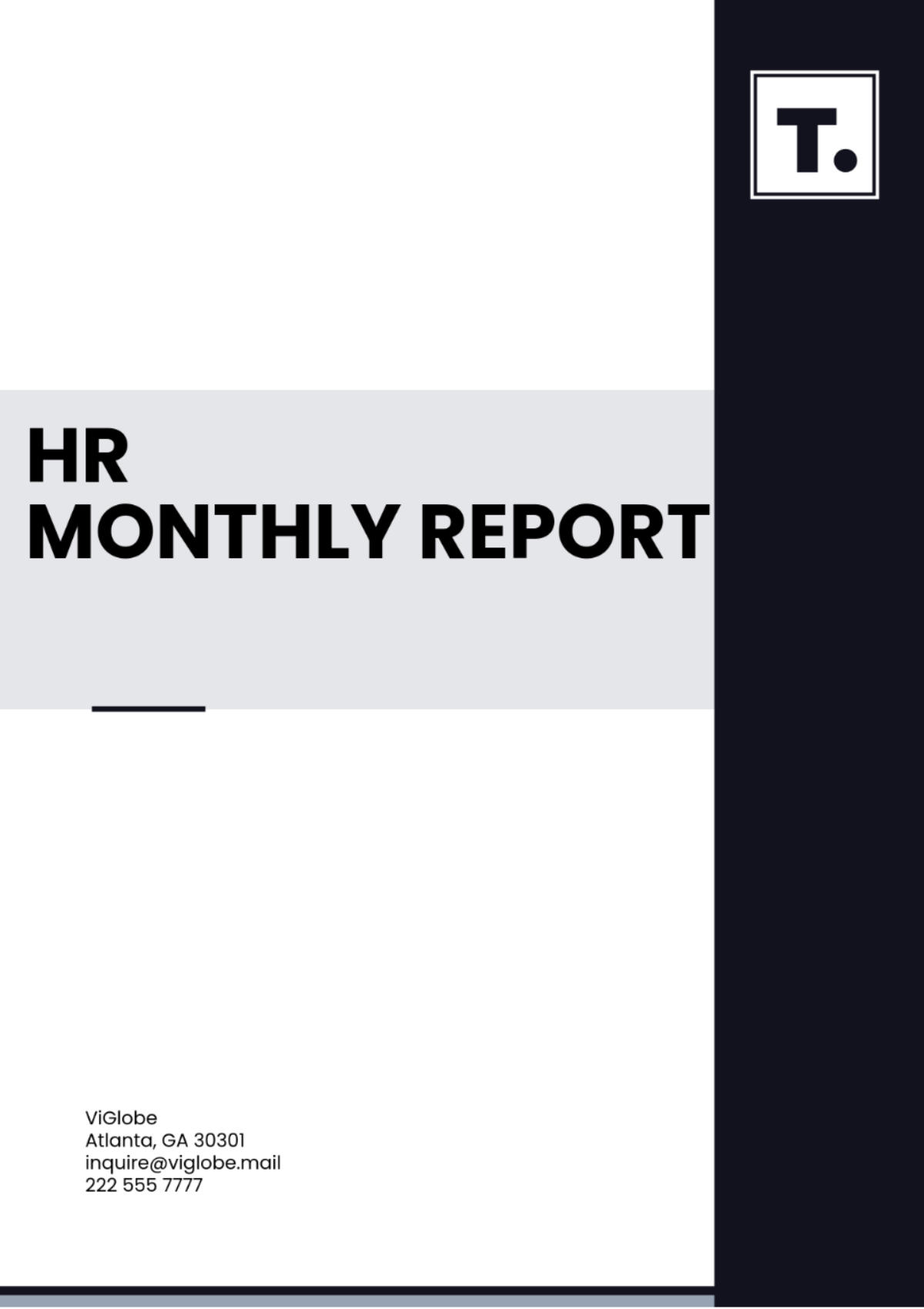
Prepared By | Company | Department | Reporting Period |
|---|---|---|---|
[YOUR NAME] | [YOUR COMPANY NAME] | HR | June 2050 |
I. Overview
The HR Monthly Report for June 2050 provides an in-depth analysis of human resources activities, highlighting key accomplishments, challenges, and strategic goals. This month, HR focused on talent acquisition, employee engagement, and compliance with new labor regulations.
II. Key Accomplishments
Talent Acquisition: Successfully recruited 50 new employees across various departments, filling critical skill gaps and supporting business growth.
Employee Engagement: Launched a company-wide employee engagement survey, achieving a 70% participation rate and gathering valuable feedback.
Training Programs: Developed and delivered a new leadership training program, enhancing the skills of 30 mid-level managers.
III. Progress Update
For this month, the HR department made significant strides in several key areas. The onboarding process was significantly improved, resulting in a 25% reduction in the time-to-productivity for new hires. This was achieved by streamlining administrative tasks, providing comprehensive onboarding materials, and implementing a mentorship program that pairs new hires with experienced employees to facilitate quicker acclimation to company culture and processes.
The department also advanced its Diversity and Inclusion (D&I) initiatives. New employee resource groups (ERGs) were established, catering to various demographics within the organization. These ERGs not only provided support and networking opportunities for employees but also contributed to fostering a more inclusive workplace environment. Additionally, diversity training workshops were conducted across all levels of the company, emphasizing the importance of inclusive practices and cultural awareness.
Another significant progress was made in rolling out the new performance management system. This system aims to improve transparency and alignment between individual goals and the company's strategic objectives. The initial phase involved training managers and employees on how to effectively use the new system, setting clear expectations, and providing tools to track progress and performance. Early feedback indicates that the new system is helping employees better understand their roles and contributions, thereby enhancing overall job satisfaction and performance.
IV. Performance Indicators
Employee Retention Rate: Maintained a high retention rate of 92%, reflecting effective employee engagement and satisfaction efforts.
Time-to-Fill Positions: Reduced the average time-to-fill positions from 45 days to 30 days, improving recruitment efficiency.
Training Participation: Achieved an 85% participation rate in training programs, indicating strong employee commitment to professional development.
V. Challenges
Regulatory Compliance: Navigating new labor regulations required significant adjustments to existing HR policies and practices.
Remote Work Management: Managing a hybrid workforce presented challenges in maintaining productivity and team cohesion.
Resource Constraints: Limited HR staff resources impacted the ability to deliver all planned initiatives on schedule.
VI. Lessons Learned
The HR department garnered several important lessons that will inform future strategies and operations. One critical lesson was the necessity of effective communication and flexibility in adapting to new labor regulations. The adjustments required by these regulations underscored the importance of proactive planning and staying abreast of legal developments to ensure compliance and mitigate risks.
The hybrid workforce model highlighted the need for a robust support system for remote employees. Managing productivity and team cohesion in a hybrid work environment presented unique challenges, emphasizing the need for continuous investment in technology and training. Regular virtual check-ins, transparent communication, and team-building activities were essential in maintaining engagement and performance among remote employees.
Resource constraints within the HR department emphasized the importance of prioritizing initiatives based on strategic impact. By focusing on high-impact projects and leveraging cross-functional teams, the department was able to effectively manage its workload and deliver key initiatives. This approach highlighted the value of strategic planning and resource allocation in achieving HR objectives.
VII. Action Plan
Goal | Action Steps | Deadline | Person Responsible |
|---|---|---|---|
Enhance Onboarding Experience | Automate onboarding workflows and provide training for hiring managers | [Date] | [Name] |
Boost Employee Engagement | Analyze survey results and implement top three suggested improvements | [Date] | [Name] |
Improve Remote Work Support | Create and distribute a remote work policy, including technology support | [Date] | [Name] |
- 100% Customizable, free editor
- Access 1 Million+ Templates, photo’s & graphics
- Download or share as a template
- Click and replace photos, graphics, text, backgrounds
- Resize, crop, AI write & more
- Access advanced editor
Be on top of your human resources management with the HR Monthly Report Template, offered by Template.net. This user-friendly, customizable template allows you to detail all HR activities comprehensively. Downloadable and printable, it is also editable in our AI Editor Tool, giving you the flexibility to adjust sections and fields to match your organizational requirements. Keep your HR department running smoothly with accurate and well-organized reports.
You may also like
- Sales Report
- Daily Report
- Project Report
- Business Report
- Weekly Report
- Incident Report
- Annual Report
- Report Layout
- Report Design
- Progress Report
- Marketing Report
- Company Report
- Monthly Report
- Audit Report
- Status Report
- School Report
- Reports Hr
- Management Report
- Project Status Report
- Handover Report
- Health And Safety Report
- Restaurant Report
- Construction Report
- Research Report
- Evaluation Report
- Investigation Report
- Employee Report
- Advertising Report
- Weekly Status Report
- Project Management Report
- Finance Report
- Service Report
- Technical Report
- Meeting Report
- Quarterly Report
- Inspection Report
- Medical Report
- Test Report
- Summary Report
- Inventory Report
- Valuation Report
- Operations Report
- Payroll Report
- Training Report
- Job Report
- Case Report
- Performance Report
- Board Report
- Internal Audit Report
- Student Report
- Monthly Management Report
- Small Business Report
- Accident Report
- Call Center Report
- Activity Report
- IT and Software Report
- Internship Report
- Visit Report
- Product Report
- Book Report
- Property Report
- Recruitment Report
- University Report
- Event Report
- SEO Report
- Conference Report
- Narrative Report
- Nursing Home Report
- Preschool Report
- Call Report
- Customer Report
- Employee Incident Report
- Accomplishment Report
- Social Media Report
- Work From Home Report
- Security Report
- Damage Report
- Quality Report
- Internal Report
- Nurse Report
- Real Estate Report
- Hotel Report
- Equipment Report
- Credit Report
- Field Report
- Non Profit Report
- Maintenance Report
- News Report
- Survey Report
- Executive Report
- Law Firm Report
- Advertising Agency Report
- Interior Design Report
- Travel Agency Report
- Stock Report
- Salon Report
- Bug Report
- Workplace Report
- Action Report
- Investor Report
- Cleaning Services Report
- Consulting Report
- Freelancer Report
- Site Visit Report
- Trip Report
- Classroom Observation Report
- Vehicle Report
- Final Report
- Software Report
